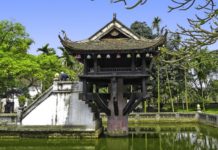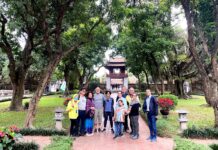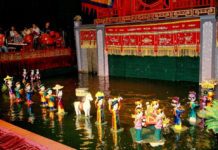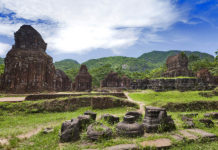Hanoi, the vibrant capital city of Vietnam, is renowned for its rich history, stunning architecture, and spiritual landmarks. Among the many cultural treasures that adorn this bustling metropolis, pagodas hold a special place in the hearts of both locals and visitors. These sacred sites not only showcase exquisite craftsmanship but also offer a glimpse into the spiritual essence of Vietnamese culture. In this comprehensive guide, we will delve into the most famous pagodas in Hanoi, exploring their history, significance, and architectural marvels.
The History and Architecture of Hanoi’s Pagodas
Origins of Pagodas in Hanoi
Pagodas have been an integral part of Vietnamese religious and cultural life for centuries, with their origins dating back to ancient times. These structures serve as places of worship, meditation, and communal gatherings for Buddhists and followers of other spiritual traditions. In Hanoi, the construction of pagodas began during the Ly Dynasty (1010-1225) and continued to flourish through subsequent dynasties.
Architectural Features of Hanoi’s Pagodas
Hanoi’s pagodas are known for their distinctive architectural styles that blend traditional Vietnamese design elements with influences from Chinese and Southeast Asian aesthetics. These structures typically feature curved roofs adorned with intricate carvings, colorful ceramic tiles, and ornate decorations symbolizing Buddhist motifs. The layout of a typical pagoda includes a main hall for ceremonies, smaller shrines dedicated to different deities, and serene courtyards for contemplation.
Notable Pagodas in Hanoi:
- Pagoda Tran Quoc: Located on the picturesque West Lake, Tran Quoc Pagoda is the oldest pagoda in Hanoi, dating back to the 6th century. Its stupa, standing tall at 15 meters, is a symbol of peace and enlightenment.
- Pagoda de un pilar: This iconic pagoda, built in the 11th century by Emperor Ly Thai Tong, is renowned for its unique lotus-shaped structure perched on a single stone pillar. It is considered a symbol of purity and resilience.
Preservation Efforts and Restoration Projects
Over the years, many of Hanoi’s historic pagodas have undergone extensive restoration efforts to preserve their cultural heritage and architectural integrity. Government initiatives and community support have played a crucial role in safeguarding these sacred sites for future generations to appreciate and cherish.
A Guide to Hanoi’s Must-See Pagodas
Exploring Tran Quoc Pagoda
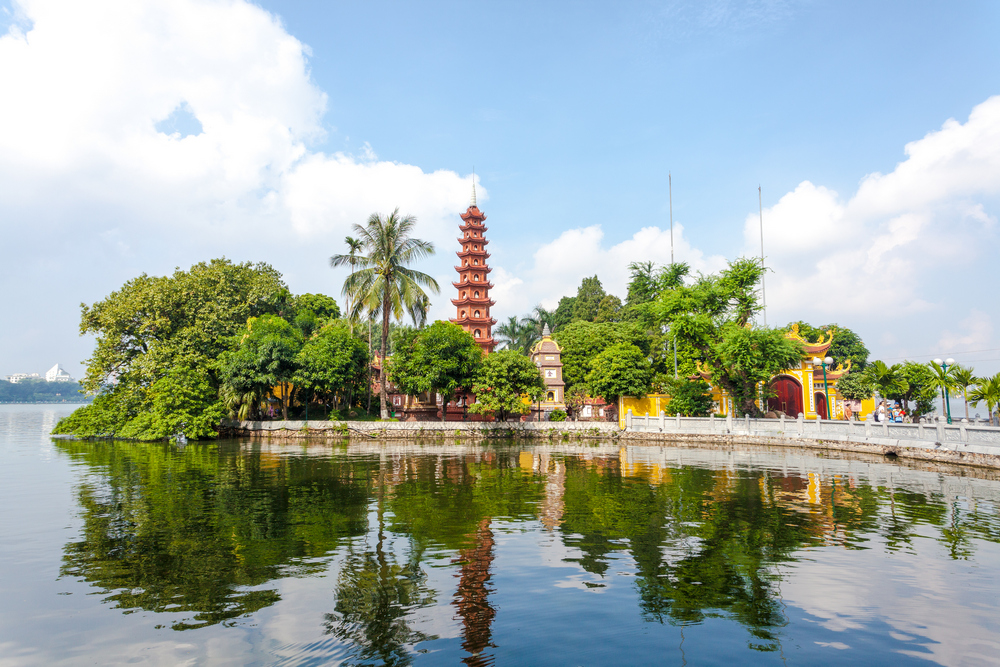
Ubicación: Thanh Nien Road, Ba Dinh District Horario de apertura: 8:00 AM – 4:00 PM Entrance Fee: Gratis Highlights:
- Magnificent views of West Lake
- Bodhi tree gifted by Indian President Rajendra Prasad
- Stone stupa with inscriptions of Buddhist scriptures
Discovering One Pillar Pagoda
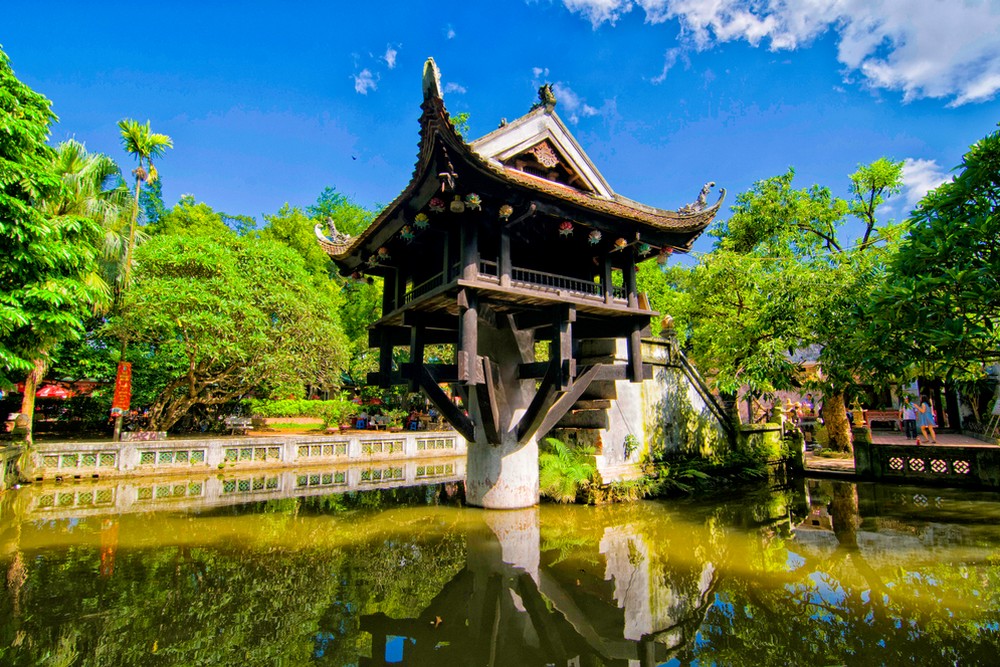
Ubicación: Chua Mot Cot Street, Ba Dinh District Horario de apertura: 8:00 AM – 5:00 PM Entrance Fee: VND 25,000 Highlights:
- Lotus pond surrounding the pagoda
- Wooden structure resembling a blooming lotus flower
- Rich historical significance dating back to the Ly Dynasty
Immersing Yourself in Quan Su Pagoda
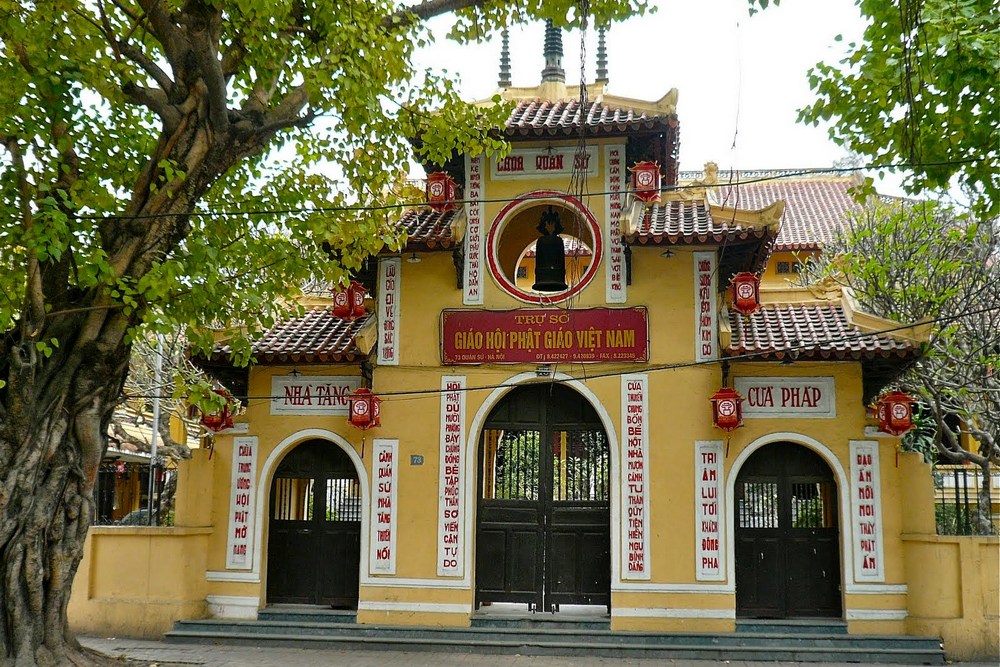
Ubicación: Quan Su Street, Hoan Kiem District Horario de apertura: 7:00 AM – 5:00 PM Entrance Fee: Gratis Highlights:
- Headquarters of the Vietnam Buddhist Sangha
- Intricate wood carvings and statues of Buddha
- Peaceful ambiance for meditation and prayer
Exploring the Cultural Significance of Hanoi’s Pagodas
Pagodas in Hanoi serve as more than just architectural wonders; they are living symbols of Vietnamese spirituality, culture, and history. These sacred sites play a vital role in preserving traditions, fostering community bonds, and promoting peace and harmony among the people.
Spiritual Practices and Rituals
Visitors to Hanoi’s pagodas can witness a diverse array of spiritual practices and rituals carried out by monks and devotees. From chanting prayers to making offerings and participating in meditation sessions, these rituals offer a profound insight into the beliefs and customs that shape Vietnamese Buddhism.
Festivals and Celebrations
Throughout the year, Hanoi’s pagodas come alive with vibrant festivals and celebrations that attract pilgrims and tourists alike. These events showcase traditional music, dance performances, and elaborate ceremonies that honor Buddhist deities and commemorate important milestones in the country’s religious calendar.
Community Engagement and Outreach
Many pagodas in Hanoi actively engage with the local community through charitable activities, educational programs, and social welfare initiatives. From providing food and shelter to the underprivileged to organizing cultural workshops and environmental conservation projects, these pagodas serve as pillars of support and compassion for those in need.
The Most Famous Pagodas in Hanoi
Hanoi boasts a wealth of pagodas that stand as testaments to the city’s spiritual heritage and architectural prowess. While each pagoda has its own unique charm and significance, several iconic sites have garnered widespread acclaim for their historical importance and cultural value.
Iconic Pagodas in Hanoi:
| Pagoda | Ubicación | Architectural Style | Historical Significance |
|---|---|---|---|
| Pagoda Tran Quoc | lago Oeste | Traditional with Stupa | Oldest pagoda in Hanoi |
| Pagoda de un pilar | Ba Dinh District | Lotus-shaped wooden pillar | Built by Emperor Ly Thai Tong |
| Quan Su Pagoda | Hoan Kiem District | Wood carvings and statues | Headquarters of Vietnam Buddhist Sangha |
Captivating Stories and Legends
Each of these pagodas is steeped in captivating stories and legends that add to their mystique and allure. From tales of miraculous events to accounts of royal patronage and spiritual revelations, these narratives enrich the cultural tapestry of Hanoi and inspire awe and reverence among visitors.
Artistic Treasures and Relics
Beyond their architectural splendor, Hanoi’s pagodas house a treasure trove of artistic masterpieces, including ancient sculptures, paintings, and calligraphy scrolls. These relics offer insights into the artistic achievements of past generations and provide a visual feast for art enthusiasts and history buffs.
Pilgrimage Routes and Sacred Journeys
For devout Buddhists and spiritual seekers, embarking on a pilgrimage to Hanoi’s pagodas is a sacred journey of self-discovery and enlightenment. The act of visiting these holy sites, paying respects to revered relics, and seeking blessings from resident monks is believed to bring spiritual merit and inner peace to the pilgrim.
A Photographic Journey Through Hanoi’s Pagodas
Embarking on a photographic journey through Hanoi’s pagodas offers a visual feast of colors, textures, and architectural details that capture the essence of Vietnamese spirituality and craftsmanship. From the serene beauty of Tran Quoc Pagoda to the intricate designs of Quan Su Pagoda, each snapshot tells a story of devotion and cultural richness.
Tran Quoc Pagoda: Serenity Amidst Nature
Nestled on the tranquil shores of West Lake, Tran Quoc Pagoda exudes a sense of peace and tranquility that is reflected in its serene surroundings and elegant architecture. Photographers can capture the play of light and shadow on the pagoda’s ancient walls, the shimmering waters of the lake, and the lush greenery that envelops this sacred site.
One Pillar Pagoda: Symbol of Resilience
The iconic One Pillar Pagoda stands as a testament to the resilience and ingenuity of the Vietnamese people, with its unique architectural design and historical significance. Photographers can focus on capturing the intricate details of the lotus-shaped structure, the reflections in the surrounding pond, and the interplay of light and shade that accentuate the pagoda’s beauty.
Quan Su Pagoda: Architectural Elegance
Quan Su Pagoda’s intricate wood carvings, statues of Buddha, and ornate decorations provide ample opportunities for photographers to showcase the architectural elegance and artistic craftsmanship of this revered site. From close-up shots of delicate carvings to panoramic views of the pagoda’s courtyards, every angle offers a new perspective on this cultural gem.
The Best Time to Visit Hanoi’s Pagodas
Choosing the right time to visit Hanoi’s pagodas can enhance your experience and allow you to fully appreciate the beauty and serenity of these sacred sites. Factors such as weather conditions, crowd levels, and cultural events can influence your visit and shape your memories of this spiritual journey.
Seasonal Considerations
Hanoi experiences distinct seasons, each offering a unique backdrop for exploring its pagodas. Spring (February to April) brings mild temperatures and blooming flowers, making it an ideal time for outdoor visits. Summer (May to August) can be hot and humid but offers lush green landscapes. Autumn (September to November) features cool breezes and clear skies, perfect for leisurely strolls. Winter (December to January) brings chilly weather but also festive cheer and cultural celebrations.
Avoiding Peak Tourist Times
To enjoy a more peaceful and contemplative visit to Hanoi’s pagodas, consider avoiding peak tourist times such as weekends and public holidays. Early mornings or late afternoons tend to be quieter, allowing you to immerse yourself in the spiritual ambiance of these sacred sites without distractions.
Cultural Festivals and Events
Keep an eye on the local calendar for special cultural festivals and events that may coincide with your visit to Hanoi’s pagodas. Participating in traditional ceremonies, witnessing colorful processions, and engaging with local communities during these festivities can provide a deeper understanding of Vietnamese culture and spirituality.
Unveiling the Secrets of Hanoi’s Ancient Pagodas
Hanoi’s ancient pagodas hold within their walls a treasure trove of secrets, mysteries, and hidden meanings that reveal the depth of Vietnamese spirituality and heritage. From cryptic inscriptions to sacred relics, these pagodas invite visitors to unravel their enigmatic past and connect with the timeless wisdom they embody.
Symbolism in Architecture
The architectural design of Hanoi’s pagodas is imbued with layers of symbolism and meaning that reflect Buddhist teachings and spiritual principles. Elements such as the lotus flower, dragon motifs, and celestial guardians are not merely decorative but carry profound philosophical significance related to enlightenment, protection, and cosmic balance.
Sacred Relics and Artefacts
Within the sanctuaries of Hanoi’s pagodas lie precious relics and artefacts that hold deep spiritual significance for practitioners and devotees. From ancient scriptures and sacred texts to relics of revered monks and bodhisattvas, these objects serve as conduits of divine energy and sources of inspiration for those who seek solace and guidance.
Mystical Legends and Folklore
The folklore surrounding Hanoi’s pagodas is replete with mystical tales of supernatural beings, miraculous events, and spiritual encounters that blur the line between myth and reality. Stories of enlightened masters, benevolent deities, and celestial interventions add a touch of magic to these sacred sites and instill a sense of wonder in those who hear them.
Architectural Marvels
Hanoi’s pagodas stand as architectural marvels that showcase the ingenuity, creativity, and craftsmanship of generations past. From intricate wood carvings to towering stupas, these structures exemplify the fusion of artistry and spirituality that defines Vietnamese religious architecture.
Wood Carving Masterpieces
One of the defining features of Hanoi’s pagodas is the exquisite wood carvings that adorn their halls, altars, and facades. Skilled artisans have crafted intricate patterns, mythical creatures, and symbolic motifs out of fine wood, creating a visual feast for visitors and a testament to the mastery of traditional woodworking techniques.
Stupas and Towers
Stupas, or pagoda towers, are prominent features of Hanoi’s religious landscape, serving as focal points for meditation, prayer, and contemplation. These towering structures, often embellished with intricate carvings and gilded ornaments, symbolize the spiritual ascent towards enlightenment and the eternal nature of the Buddhist teachings.
Roof Designs and Decorations
The curved roofs of Hanoi’s pagodas are works of art in themselves, showcasing a harmonious blend of form and function. Tiled with colorful ceramics and embellished with dragon motifs, lotus finials, and auspicious symbols, these roofs evoke a sense of grace and elegance that complements the spiritual aura of the pagodas.
The Role of Pagodas in Vietnamese Society
Pagodas play a multifaceted role in Vietnamese society, serving as centers of religious practice, cultural preservation, education, and community engagement. These sacred sites are not just places of worship but also hubs of social activity and spiritual nourishment for individuals and families across generations.
Spiritual Sanctuary and Reflection
For many Vietnamese people, pagodas provide a sanctuary for spiritual reflection, meditation, and prayer amidst the hustle and bustle of urban life. Whether seeking solace in times of hardship, expressing gratitude for blessings received, or simply connecting with a higher power, visitors find comfort and peace within the tranquil confines of these sacred spaces.
Cultural Heritage and Identity
Pagodas are repositories of Vietnam’s cultural heritage and identity, preserving ancient traditions, rituals, and artistic expressions that have shaped the nation’s collective consciousness. Through ceremonies, festivals, and religious practices, pagodas serve as living museums that transmit cultural knowledge and values to future generations.
Community Building and Social Welfare
Pagodas play a vital role in fostering community cohesion, solidarity, and mutual support among residents of Hanoi and beyond. Through charitable initiatives, educational programs, and social services, these sacred sites contribute to the well-being and development of local communities, addressing societal needs and promoting compassion and empathy.
The Future of Hanoi’s Pagodas
As Hanoi continues to evolve and modernize, the future of its pagodas faces challenges and opportunities that will shape their preservation, relevance, and sustainability in the years to come. Balancing tradition with innovation, spirituality with pragmatism, these sacred sites are poised to adapt to changing times while remaining steadfast in their commitment to serving the spiritual needs of the faithful.
Conservation and Restoration Efforts
Preserving the architectural heritage and cultural significance of Hanoi’s pagodas requires ongoing conservation and restoration efforts to safeguard these sacred sites for future generations. By employing best practices in heritage conservation, utilizing sustainable materials, and engaging with local communities, authorities can ensure the longevity and integrity of these invaluable landmarks.
Education and Outreach Programs
Enhancing public awareness and appreciation of Hanoi’s pagodas entails developing educational programs, interpretive materials, and interactive experiences that engage visitors of all ages and backgrounds. By promoting cultural literacy, religious tolerance, and historical understanding, pagodas can serve as platforms for dialogue, learning, and cross-cultural exchange.
Innovation and Adaptation
Embracing technological advancements and innovative approaches can help Hanoi’s pagodas stay relevant and accessible in a rapidly changing world. From digital archives and virtual tours to eco-friendly practices and sustainable development initiatives, these sacred sites can leverage modern tools and strategies to broaden their reach and impact while staying true to their spiritual roots.
Conclusión
In conclusion, the most famous pagodas in Hanoi represent not just architectural wonders but also spiritual sanctuaries, cultural landmarks, and community hubs that embody the essence of Vietnamese heritage and tradition. From the ancient tranquility of Tran Quoc Pagoda to the symbolic resilience of One Pillar Pagoda and the spiritual elegance of Quan Su Pagoda, these sacred sites offer a window into the soul of a nation shaped by faith, artistry, and resilience.
As visitors embark on a journey through Hanoi’s pagodas, they are invited to explore the rich tapestry of stories, symbols, and rituals that define these sacred spaces and connect them to a timeless legacy of wisdom and compassion. Whether seeking solace, inspiration, or simply a moment of contemplation, the pagodas of Hanoi stand ready to welcome all who approach with an open heart and a curious mind, inviting them to discover the beauty and serenity that reside within these hallowed grounds.


